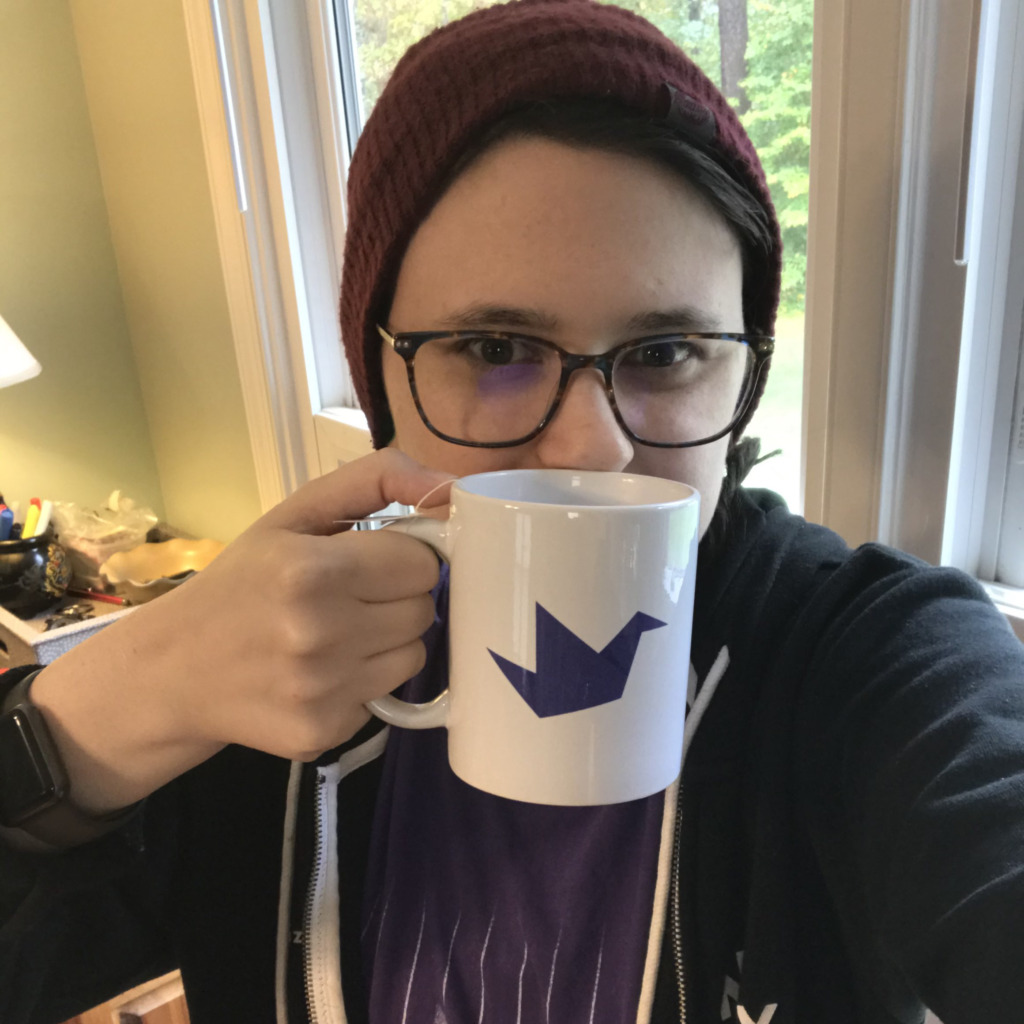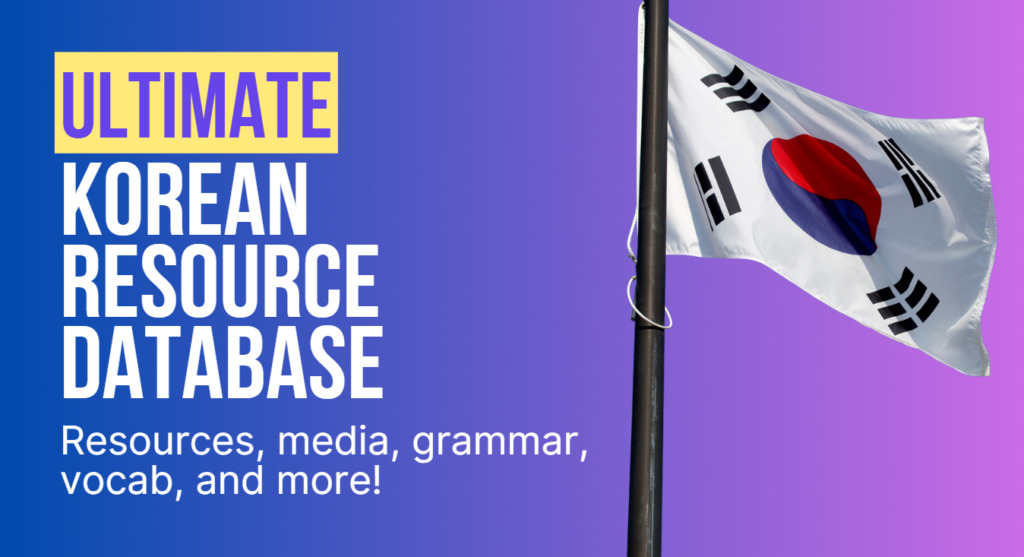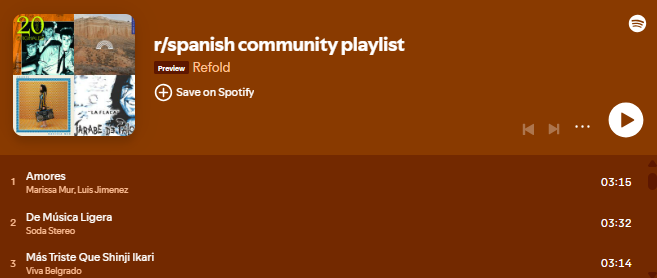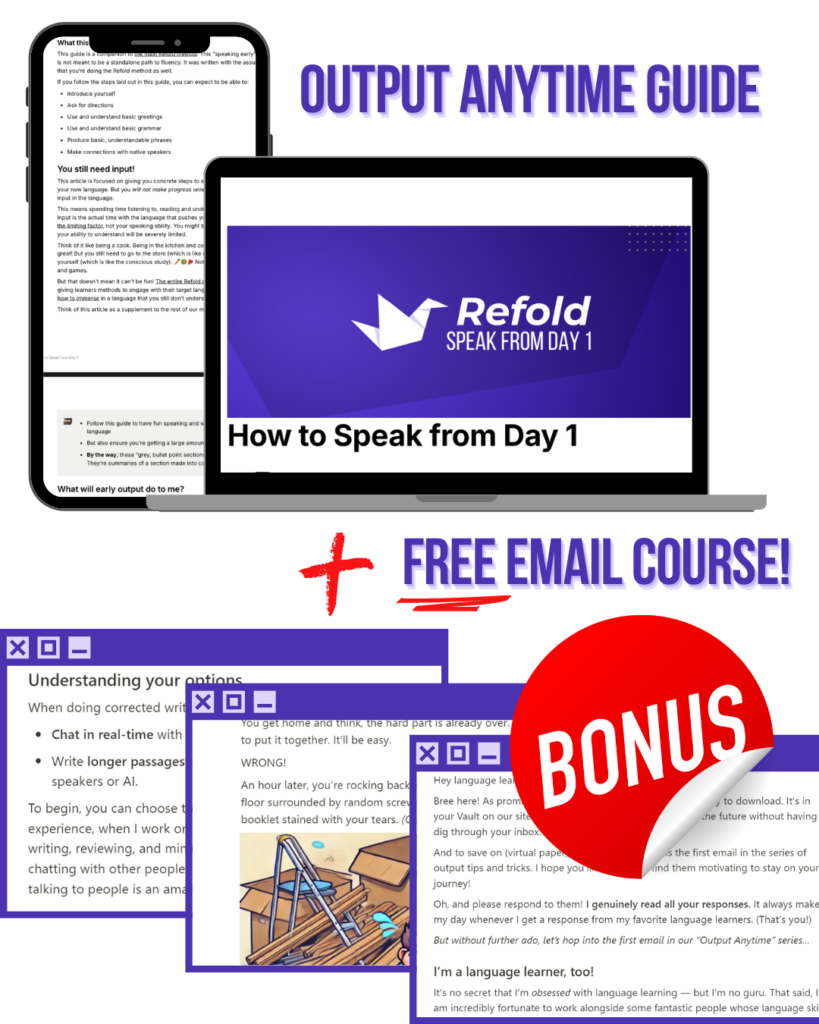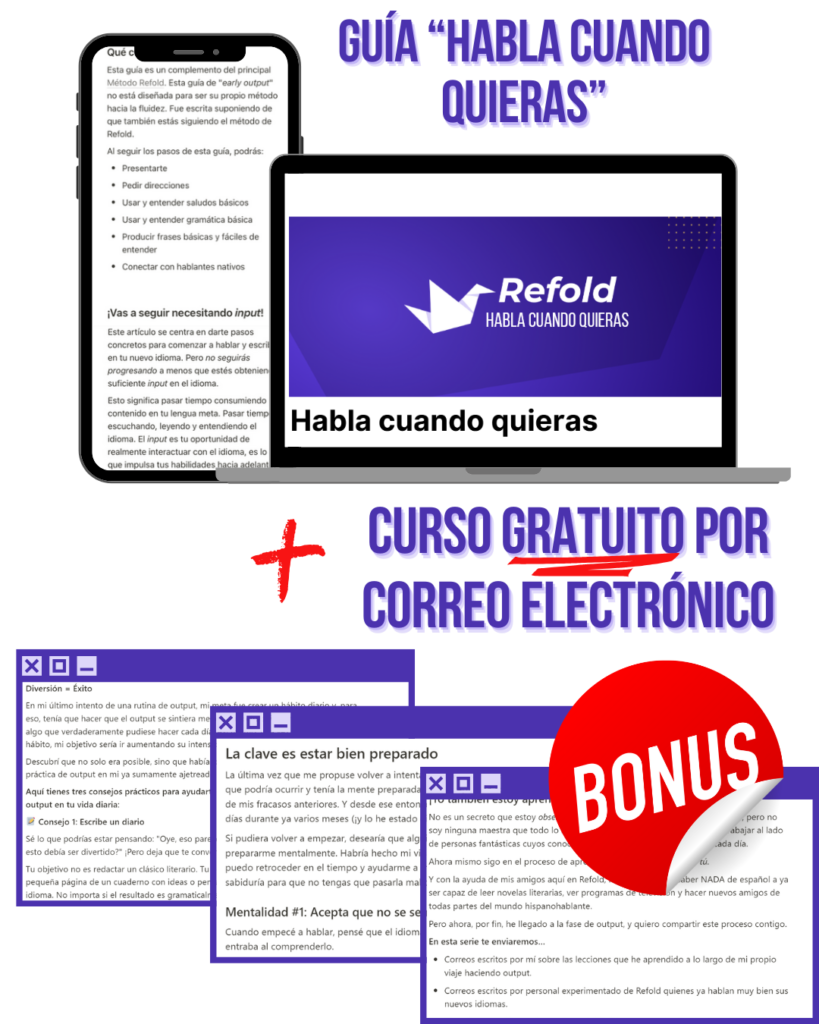Some of the most common questions we receive here at Refold are centered around how many words do you need to know to be fluent in a language. It’s a natural question since words are the building blocks of any language. The answer? It really depends on what you consider “being fluent.”
If your definition of how many words do you need to know to be fluent involves being able to use every single word in a language, you’re looking at probably hundreds of thousands of words, which can easily feel overwhelming.
The good news? You don’t need to know every word to start speaking the language (not even native speakers do!). You can start small and build from there.
But this leads us to an even bigger question: Am I actually ready to start speaking?
I’ve struggled with this myself. Even after reaching a high level of comprehension in Spanish, I didn’t feel confident speaking. If you’ve ever wondered when you’re truly ready to start speaking, this post is for you.
Language Input vs. Output
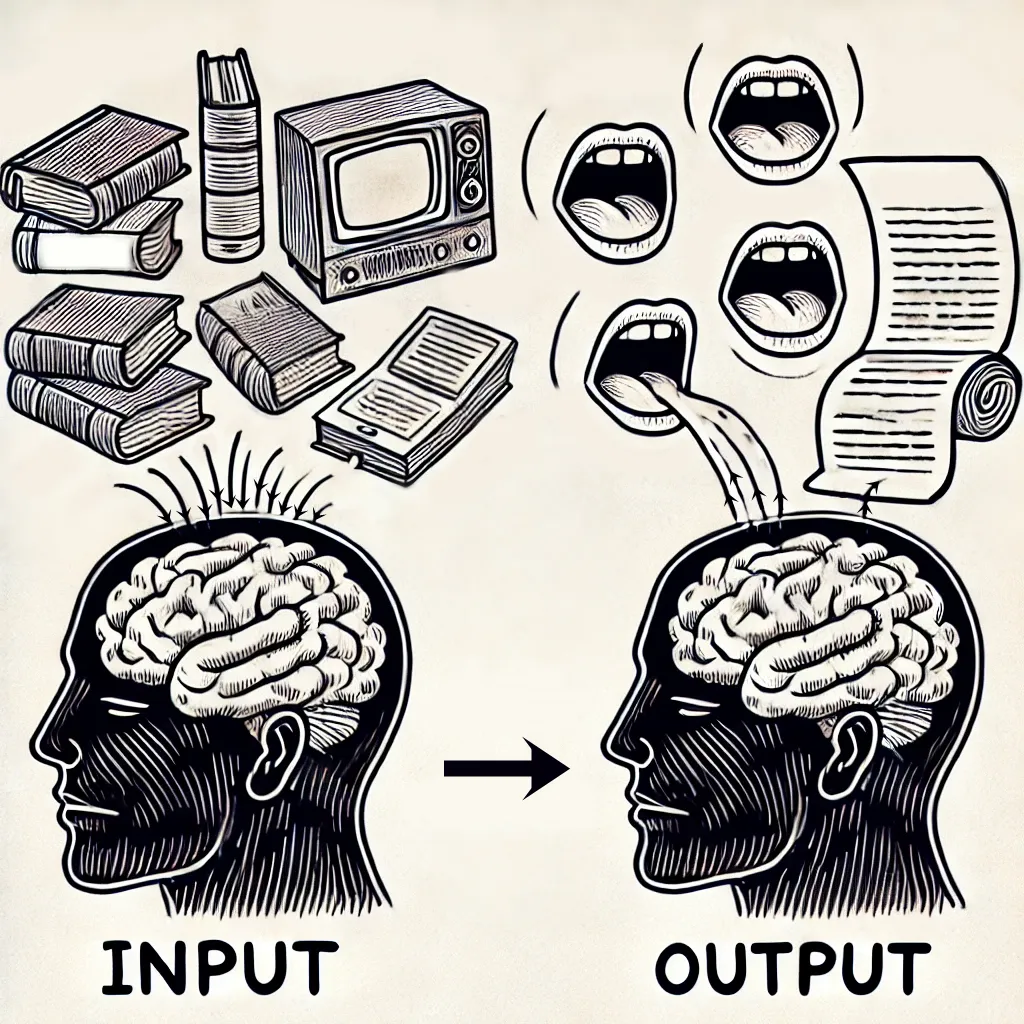
Before diving into whether you’re ready for output, let’s define what we mean by it.
- Input: This means consuming language—reading, listening, or watching content in your target language. Input is crucial for building comprehension, which forms the foundation of your language skills.
- Output: This involves actively producing the language, whether through speaking or writing. It’s NOT about:
- Reading aloud
- Repeating phrases
- Practicing pronunciation
For immersion learners who’ve been following the Refold Method and focusing on input, transitioning to output can feel especially daunting—but it’s a vital step toward fluency.
Recognizing When You’re Ready to Speak
Many learners hesitate to start speaking, even when they have a strong understanding of a language. I’ve experienced this myself.
For some, the language just bubbles up naturally after spending enough time with it. But for many, beginning to speak feels awkward and unnatural. Can you relate?

The truth is, I was able to speak for a while, but it felt uncomfortable.
I kept delaying, thinking I wasn’t ready. While some people instinctively know when they’re ready, I wasn’t one of them. I needed to be sure.
The good news? There are measurable signs that show you’re ready to start outputting with confidence.
Take a Vocabulary Size Test
A key factor in readiness is your vocabulary size. Rather than asking how many words do you need to know to be fluent in a language, start asking how many words you need to start speaking.
Generally, a good target is around 6,000 unique words. By “unique words,” we mean root words—so “eat,” “ate,” and “eaten” would all count as one.
This number of words should be enough to:
- Hold conversations
- Navigate basic social situations
- Understand a wide range of everyday topics
If you’re learning Japanese, Spanish, or French, Refold offers a vocabulary size test to assess your level. (Note: It’s in Beta and maxes out at 5,000 words, but if you hit that limit, you’re probably ready.)
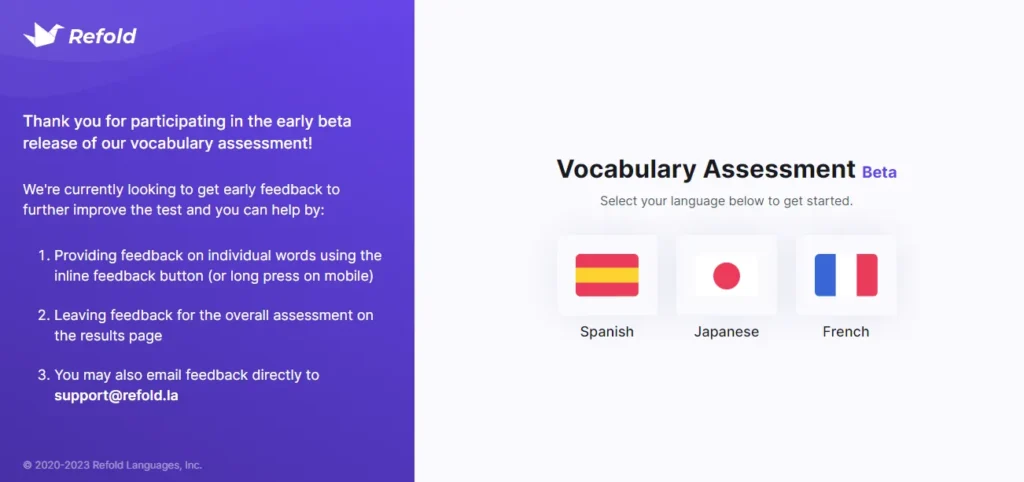
For other languages, look for similar tests online. If none are available, you can still assess your comprehension with methods like crosstalk language learning (more on that below).
Listen Before You Speak: What is Crosstalk?
Vocabulary size is important, but it’s not everything. You also need to hear and understand words in real-life conversations at the speed of thought.
There are a few ways to test this. For example, you could watch a show in your target language without subtitles or listen to audiobooks to see how easy it is to follow along. My favorite method is crosstalk.
Crosstalk is where you have a conversation with someone who is a native speaker of your target language. Here’s the catch: you both only speak in your own native languages. This allows you to practice listening comprehension without the pressure of speaking. Click here to learn more about crosstalk.

If you can effortlessly understand your crosstalk partner at full speed, it’s a great sign that you’re ready to start developing your speaking skills.
Numbers Don’t Lie!
Even after maxing out my vocabulary test, enjoying crosstalk conversations, and listening to several audiobooks in Spanish, I still hesitated to start speaking. But when I finally took the leap, I realized I was more than ready.
If you’re like me, you might just need a bit of a confidence boost.
Testing your skills—whether through vocabulary assessment, crosstalk, or other methods—can give you solid proof that you’re ready and the courage to dive in headfirst and enjoy the process!
Ok, I’m Ready. Now what?
Fantastic! You’ve assessed your skills, and you’re ready to start speaking. But how should you begin?
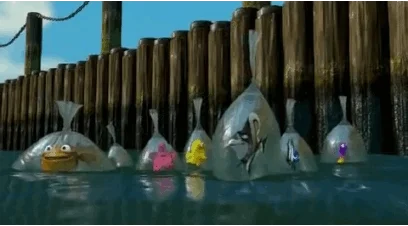
Stay tuned for the rest of the Output 101 series to find out! We’ll share guides and tips to help you make the most of this phase of your language journey.
Like what you see?
Sign up now and we'll deliver even MORE amazing content like this right to your inbox!
- Receive our exclusive 6 SECRETS to language learning success email course.
- Stay motivated with weekly emails overflowing with helpful language-learning tips, tutorials, and more!
- Get behind the scenes access into the inner workings of Refold!



